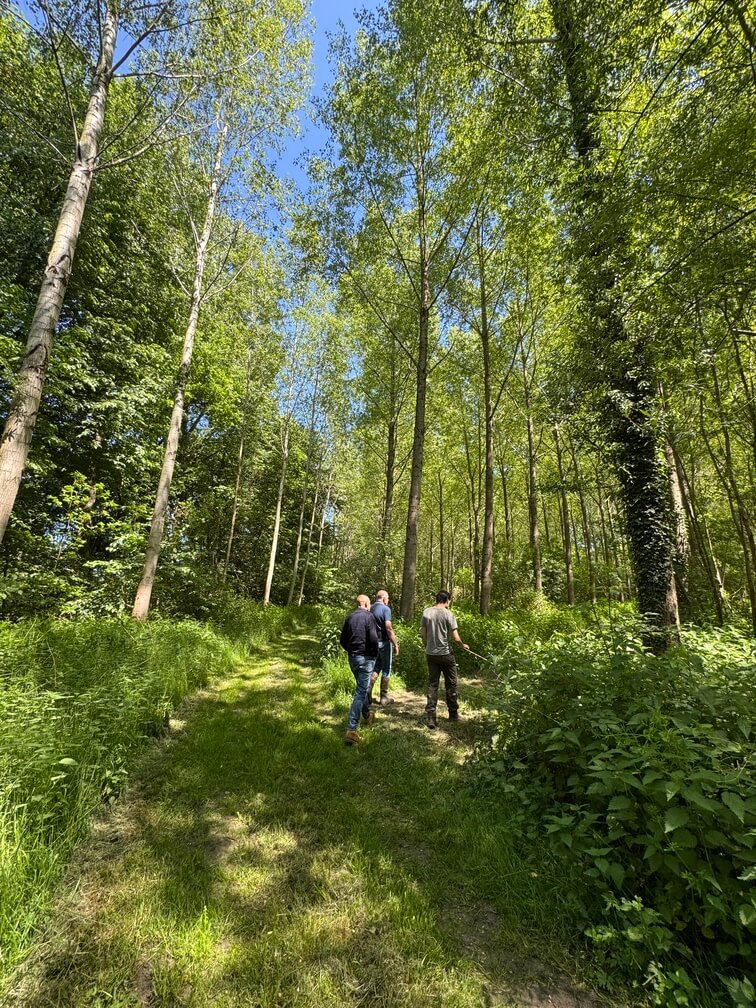When talking about planting trees, companies and individuals might be inclined to only think about carbon sequestration. While carbon sequestration is often displayed as the main benefit of trees, there is much more to the story. We will go more into detail on this below.
Biodiversity
While the importance of carbon sequestration by trees cannot be overlooked, fighting biodiversity loss is another important driver for tree planting. Biodiversity – being the variety of all life on earth – is vital for all species. Without the abundance of species there is today, life on earth would not be possible, at least not for humans. Forests are home to billions of species and so form a hotspot for biodiversity. Tropical forests are by far the most biodiverse in terms of the number of species, that is why mainstream media will often refer to tropical forests when talking about biodiversity.
Air pollution and resource scarcity
The most known issue driving forest protection or reforestation projects is probably air pollution. Since the industrial revolution, air pollution has skyrocketed. The increase in production also led to more trees being cut down. These cause-and-effects created a reinforcing loop: the more production, the more trees were cut, and the more trees were cut, the more polluted the air became. It does not stop there. Due to unsustainable material use, resource scarcity is also an upcoming threat. Recent news announcements say that copper and other precious metals are already hard to find. And so, the cycle continues. Moreover, where planting trees is often perceived as the only solution to store carbon and clean the air, algae and corals are another great filter and storage mechanism.
Soil erosion and water scarcity
Planting trees also helps to combat soil erosion and water scarcity. We need that very soil and water to grow our food and although part of soil erosion is due to natural processes, humans also contribute a large part. “Ploughing, unsuitable agricultural practices combined with deforestation and overgrazing, are the main causes of human-induced soil erosion.” (Borrelli et al., 2020). Trees help clean water by keeping it longer in the layers of soil underneath the surface and the tree roots play a vital role in preventing soil erosion by holding everything together. Additionally, because forests hold so much water, they also help to prevent desertification: the process of fertile land turning into desert.
Farmers’ financial insecurity
Lastly, tree planting tries to restore the consequences of deforestation and solve farmers’ financial insecurity. However, we can plant as many trees as we want, but if the balance shows that there is more deforestation than reforestation, then the impact is less than zero. That is why monitoring is as important as actually planting the tree. Luckily over the past decade, an increasing number of monitoring tools have been developed. For example, using satellite imagery can give a good overview of deforested and reforested sites as well as an evolution over the years.
Although, technology can help us to a certain extent, some proof is only found on the field. Local farmers play a vital role in the tree planting chain and, thus, must also be financially well compensated. Not only their financial security is of great importance, but also their practices. That is why Go Forest, together with its partners, makes sure not only that trees are planted and cared for but that they are valued as well. Local farmers are educated and proven that an agroforestry business model can be as viable as an agricultural one.
Tree planting has a positive impact on not only carbon capture, but also on all the other issues discussed above. They are displayed separately, but they are all interconnected, making them complicated to solve. Because planting trees can be a partial solution for these issues, we believe our mission at Go Forest is of vital importance.










